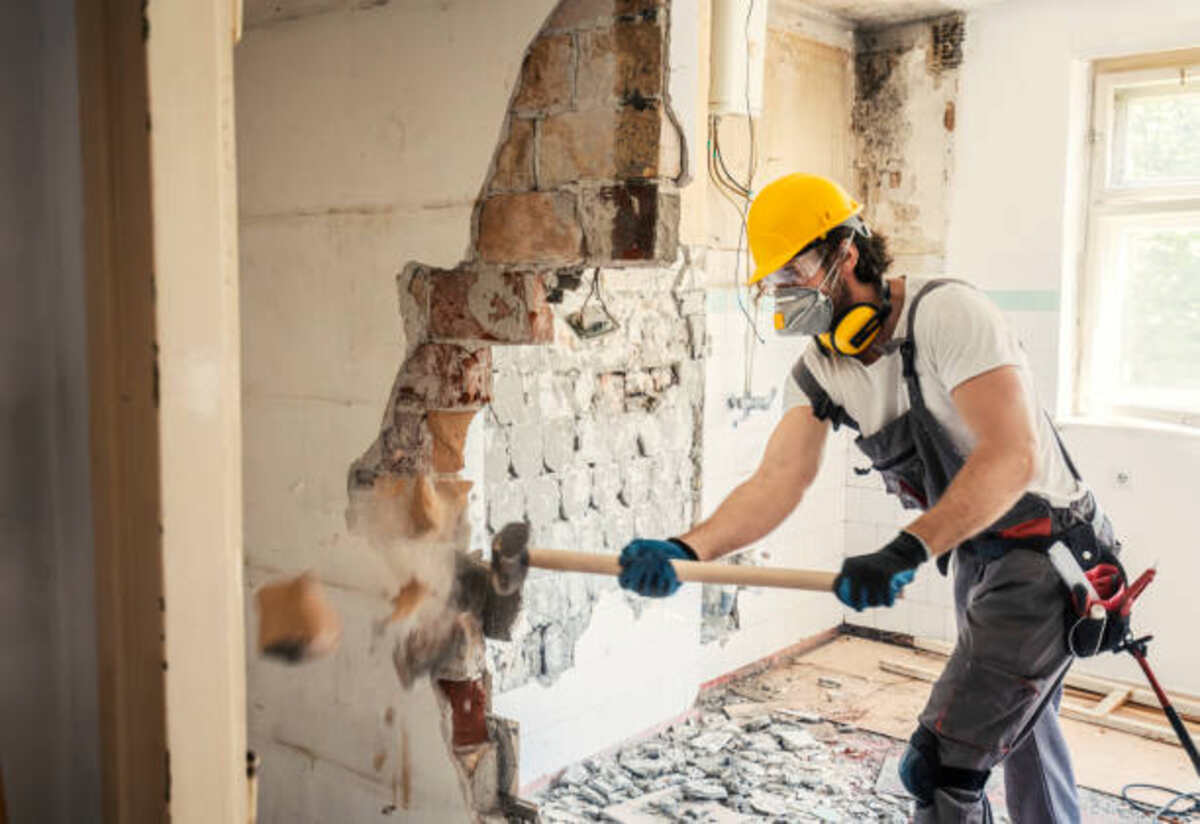Demolition work is no simple task—from using a sledgehammer and setting explosives to sending wrecking balls crashing through buildings of all shapes and sizes, it requires dedication and hard work from professionals. This is the best guide to finding Main Street Demolition Riverside.
Planning is vital in demolition, and conducting risk analyses can help avoid project setbacks and accidents.
Implosion
Implosion demolition is one of the more visually striking methods of destruction. It utilizes explosives to take down buildings’ primary structural elements. Although implosion only accounts for a small percentage of demolition projects, most structures are destroyed using heavy machinery like excavators, wrecking balls, or bulldozers.
Before commencing any demolition work, experts develop an extensive plan outlining which elements will be demolished, how this destruction will take place, and the amount of debris created from this work. This plan is necessary to secure the necessary permits for demolition services to proceed successfully and should typically be handled by an experienced provider of such services.
Demolition operatives must consider the surrounding environment when selecting an appropriate method of demolition for a structure. Explosives may not be suitable in urban settings; therefore, alternative techniques will likely be employed, such as using an oxyacetylene torch to cut steel braces and gravity and inertia with a massive wrecking ball to bring down structures.
Workers involved in demolition are exposed to high levels of noise that may result in hearing loss, so using ear protection and gloves to work safely with heavy equipment are both essential. Furthermore, vibrations caused by specific hand tools may lead to hand-arm vibration syndrome (HAVS), while sitting on machines propelled by diesel engines may trigger whole-body vibration syndrome (WBVS). For these reasons and others, companies must employ experienced and knowledgeable demolition contractors.
Excavation
Once all the necessary equipment arrives at a construction site, the excavation team sets to work. They start by clearing away unwanted plants, trees, and foundation debris, such as foundations and walls, to create a clear canvas on which building can occur; this stage is known as “clearing and grubbing.”
Next, an excavation crew will dig trenches for pipes, cables, and utilities and remove excess dirt to create the desired surface. Depending on the project, this may be done manually or mechanically; excavation can also be used to create slopes and basins for drainage purposes.
Excavation teams then begin the task of grading the land in preparation for building your new home or business, from creating flat building pads and roads to adding slopes, swales, and basins for water drainage purposes.
One common pitfall of excavation is when a construction supervisor defers all major decisions regarding staging and planning to the foreman alone. This leads to issues like working beyond contract limits or incorrect final elevations. To prevent this from occurring, a Construction Supervisor should participate in staging and planning processes to set and communicate limits and establish goals.
Wrecking Ball
Wrecking balls have long been associated with demolition. Suspended from cranes, these massive steel balls weighing 12,000 or more can be swung toward buildings to cause them to collapse via the sheer weight and inertia of the wrecking ball combined with gravity bringing down structures.
While wrecking balls may make for dramatic viewing, their use has decreased in favor of better demolition technology. Furthermore, wrecking balls are highly hazardous; to safely use one, one requires that its swing arc be kept free from people and equipment, as well as an experienced crane operator with precision skills, in order to carry out an efficient demolition operation.
Explosive demolition may take less time and be safer for workers on site, yet it still produces significant amounts of dust that is hard to contain and clean up afterward. Furthermore, its loud and messy nature makes it inadvisable in urban settings.
Excavator-based methods tend to be quieter and safer for those on the ground. They use shears, crushers, and hydraulic hammers attached to an excavator arm to break down walls and floors of buildings. Special ground crews then sort debris into recycle, reuse, sell, or donate bins before clearing away debris for new construction on site. At this stage of demolition work, teams may also address environmental concerns by clearing away or remediating contaminated soils before clearing.
Safety
Demolition work can be dangerous, and accidents may arise from careless workers. Workers must become familiar with all Occupational Safety and Health Administration (OSHA) regulations that pertain to demolition work and follow them at all times – this means always wearing appropriate PPE and having emergency evacuation plans in place. Furthermore, workers should be mindful of unique risks present at demolition sites – these may include asbestos, silica, and lead material, which requires special handling, as well as hidden stairways/passages, which should only be accessible via authorized routes during active work periods.
Before beginning demolition work, a comprehensive site survey is imperative. This should include searching for hazardous materials, electrical and gas lines, unstable structures, and potential risks. Once conducted, the findings should be included in your demolition plan to help keep workers aware of potential dangers and ensure adequate precautions can be taken against them.
Workers must always be able to see and hear what they are doing, which is particularly essential when working near heavy machinery and vehicles. Workers should receive training on how to operate equipment safely, with refresher courses offered periodically; additionally, they should receive instructions on avoiding hazards like falling debris and power lines.

